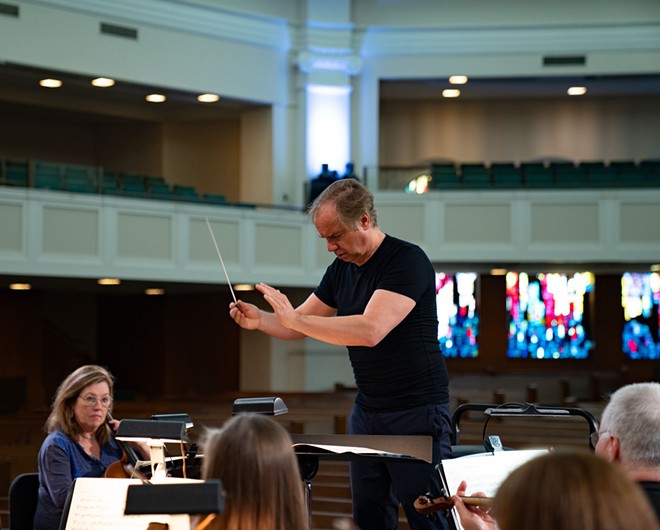
Sebastian Lang-Lessing is on a mission.
Since his controversial firing in April as the San Antonio Symphony's music director emeritus, the maestro has been tirelessly meeting with city leaders. His goal: winning public funding for the troubled orchestra and ending the months-long walkout by its musicians.
Lang-Lessing, whose resume also includes stints with Deutsche Oper Berlin and the Tasmanian Symphony Orchestra, argues that the musicians would be willing to boost the educational work they do for the community if the city and county agree to provide a long-term source of funding for the financially troubled organization.
"It could be a game changer by basically following how the Tobin Center was financed, a mix of the public and private sector," said Lang-Lessing, who's held recent meetings with Mayor Ron Nirenberg, Bexar County Judge Nelson Wolff and former Mayor Phil Hardberger, among others, to sell the idea.
The county invested more than $100 million to turn the old Municipal Auditorium into the Tobin, the downtown performing arts center that opened in 2014, while the city contributed $40 million in real estate. More than $50 million subsequently stemmed from private donations.
In the symphony's case, the public sector outlay would only need to be a fraction of that amount, noted Lang-Lessing, who served as the orchestra's musical director from 2010-2020. In recent years, the organization's revenues have never exceeded its 2015-2016 high of $8.3 million, and it's averaged an unsustainable $1 million in emergency fundraising annually.
"With that source of money, we could expand education, marketing and development," Lang-Lessing said. "I don't want us to go back to the status quo. The status quo has failed."
Dollars and sense
Lang-Lessing was terminated in April after it was announced that he would conduct concerts staged by the striking Musicians of the San Antonio Symphony — something management said was a violation of his contract.
The musicians have been on strike since Sept. 27, balking at a contract offer that would slash the number of full-time musicians from 72 to 42, eliminating four positions and converting 26 more to part-time. While the Symphony Society, the orchestra's managing body, said the cuts are needed to bring its budget in line, outside experts called them draconian.
Representatives for Nirenberg and Hardberger confirmed their recent meetings with Lang-Lessing. However, neither was available for comment on the proposal.
Wolff said he understands Lang-Lessing's desire to forge a long-term solution for the orchestra. He also acknowledged that stable funding sources such as endowments are needed for the symphony to stop staggering from one crisis to another.
However, he said discussing public funding before resolving the strike is putting the cart before the horse.
"I just don't think anyone wants to put money into this thing until the labor dispute is resolved," Wolff said. "To me, they have to come to some sort of agreement before we're able to help."
In public statements, the Symphony Society has said the orchestra needs to rein in its budget and stabilize its economic situation before it can begin attracting endowments or other forms of long-term funding. The proposed labor cuts are a major step in that direction, Executive Director Corey Cowart argues.
A stain on the resume
Lang-Lessing counters that the quickest way to end the strike is to ensure that the symphony will have the money it needs to operate. Once stabilized, the organization will be able to focus attention on improving private fundraising and chasing the endowments it needs to be viable.
The musicians shouldn't be forced to sign a contract calling for such substantial reductions, he added. Indeed, they already agreed to an 80% pay cut during the 2021 season due to the pandemic.
What should be clear, Lang-Lessing said, is that management's approach and the status quo have failed. Creative thinking is the only way the organization can move forward.
And, he added, the clock is ticking down. Several musicians have already signed temporary or permanent contracts in other cities for better pay and benefits.
Plus, the orchestra's reputation is being diminished as the labor dispute drags on. He likens the plan to downsize the orchestra and cut pay and benefits to a "stain on the resume" of the symphony, saying it will have a harder time attracting top talent.
"Right now is the great moment to turn things around," Lang-Lessing said.
Stay on top of San Antonio news and views. Sign up for our Weekly Headlines Newsletter.















